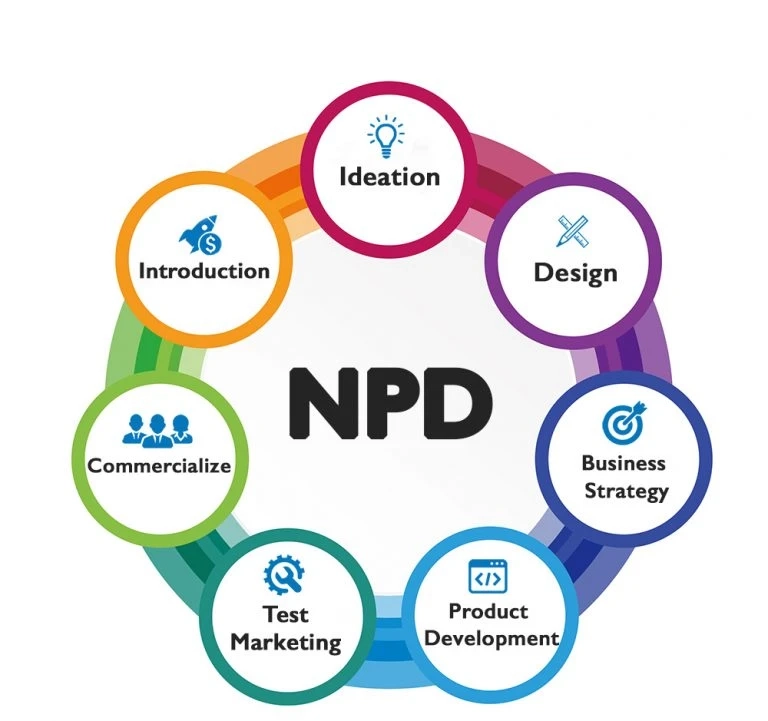Summary: New product development is about converting new and untried ideas into workable products. The rule of thumb for New Product Development is to focus on innovating while delivering value.
According to Statista’s survey (n= 544), 29% of tech companies planned to focus on new product development post the onset of COVID-19. Considering the impact of COVID-19 on businesses, the R&D efforts around new product development have increased. While some tech companies focused on launching new products, others improved the existing digital products.
The secret sauce for new product development’s idea success is simple — focus on product discovery and address the pain points of the target audience. This is why it is essential to gather customer insights through customer surveys, interviews, monitoring social media interactions, and ethnographic research.
Moreover, product discovery should be an ongoing process and should continue over the product life cycle stages, i.e., idea generation, idea validation, validating PoC and prototype, MVP development, pre-launch, and post-launch. In other words, product discovery should continue throughout the product’s lifetime.
What is New Product Development (NPD)?
In business and engineering, new product development (NPD) covers the complete process of bringing a new product to market, renewing an existing product, or introducing a product in a new market. A central aspect of NPD is product design, along with various business considerations. New product development is described broadly as the transformation of a market opportunity into a product available for sale.
Seven Stages of New Product Life Cycle Development Process
Stage 1: Idea Generation
The goal should be to generate many worthy ideas that can form the foundation for the New Product Development strategy. The major focus for stage 1 should be to arrange brainstorming sessions where solving customer problems is given precedence.
Stage 2: Idea Screening
This New Product Development stage revolves around choosing the one idea that has the highest potential for success. Put all the ideas available on the table for internal review. That is, turn to people with industry knowledge and experience in the field for idea screening.
For a new product development idea, having a proof of concept (POC) should hold precedence as it helps check the feasibility of the idea. There is no point in zeroing in on an idea that is not technically feasible to build.
Stage 3: Concept Development & Testing
Before starting with the New Product Development process, building a detailed version of the idea and the user stories should be given priority.
This value proposition evaluation is the first step toward concept development and testing. At the very least, it ensures that problems in the approach are discovered sooner and the team can course-correct earlier. That helps to ensure that technical debts will not accumulate.
Stage 4: Market Strategy/Business Analysis
Marketing strategy is all about drafting a way to reach out to the targeted audience. Perhaps the best and most straightforward method is to follow McCarthy’s 4Ps of marketing for a New Product Development project.
Stage 5: Product Development
When the New Product Development idea is in place, the market strategy is documented, and the business analysis is completed, it is time to move on with the product life-cycle development process.
1. Prototype
2. Minimum Viable Product (MVP)
Stage 6: Deployment
Once the MVP is ready, efforts shift from development to deploying the product in the live environment. This process involves embracing the DevOps culture and implementing the CI/CD pipeline.
The different stages of implementation include:
a. Commit
b. Build
c. Alpha Deployment
d. Beta Deployment
e. Production Deployment
Stage 7: Market Entry/Commercialization
Commercialization is an umbrella term that entails varied strategies to ensure the success of the new product. Here is what commercialization includes:
1. Marketing the Concept Over Product
2. Having a Brand Voice
3. Conducting Intriguing Webinars
Benefits of the New Product Development Process
Here are some of the benefits of sticking to the New Product Development process:
Helps check the technical feasibility of the ideaEnsures faster time to marketEffectively addresses the customer needsMultiplies the chances of successReduces technical debtBetter management of the feature creepNegates the opportunity cost

